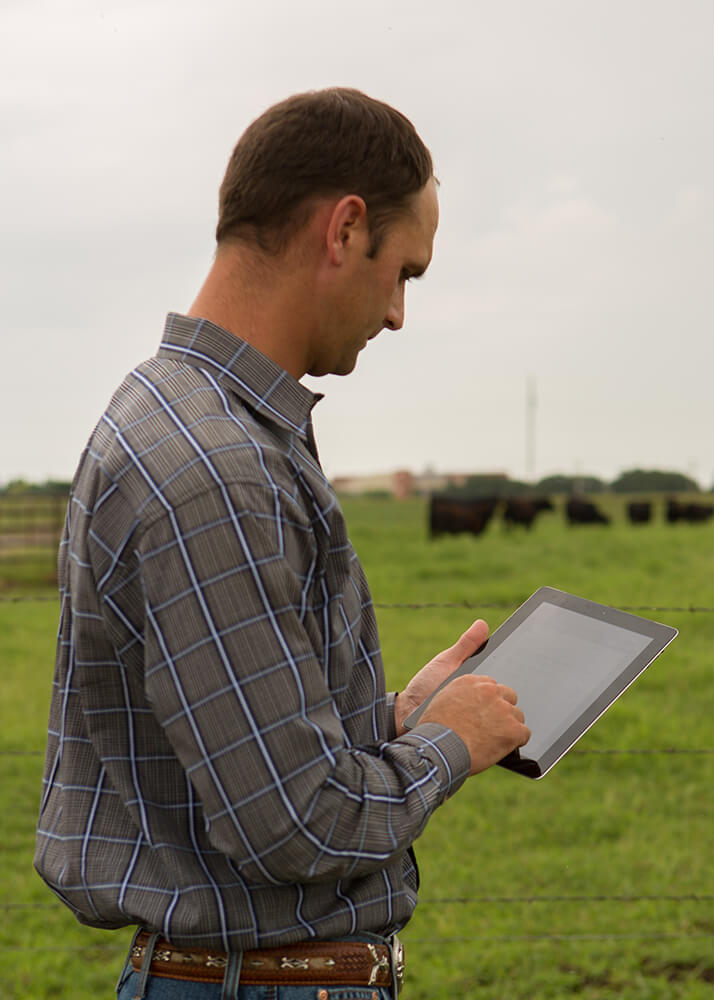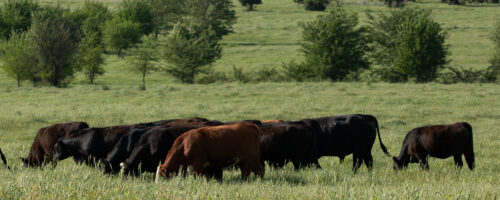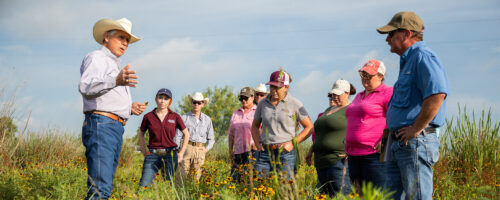Free Learning Resources for Regenerative Ranchers
Get started in regenerative agriculture by learning the principles and hearing the stories of other ranchers on the journey.
Successful ranchers never stop learning. We wanted to share some educational resources about regenerative agriculture and regenerative ranching that we have found valuable and that you might find valuable too. We recognize there are many different types of learners, and, while this list is only a short list, we hope that it will prove insightful or helpful to you and others who may want to learn more.
Foundational Resources of Regenerative Ranching
Sometimes the hardest step is knowing where to start. We have provided a series of reading resources that will help you become familiar with the background terms and concepts that you will see repeatedly in regenerative agriculture curriculum, training and help guides.
Regenerative Agriculture Is About Direction Over Perfection
This article summarizes what regenerative ranching is, the outcomes and the five underlying principles that guide management practices.
Glossary of Common Terms in Regenerative Agriculture
This glossary explains different words you might hear in conversations about regenerative agriculture and regenerative ranching. Find definitions for terms like regenerative agriculture itself to terms that describe different management philosophies (such as holistic management) and land ecology concepts (like biodiversity and ecosystem).
USDA NRCS Soil Health Resources
This portal of information from the Natural Resources Conservation Service has basics about soil health principles and soil biology.
Soil Quality Indicator Sheets
These information sheets review soil quality indicators and ways to measure them in the field. Many of the methods require specific equipment, but the overviews and descriptions of the different indicators are helpful in establishing all the ways that soils reflect health.
Dirt to Soil: One Family’s Journey into Regenerative Agriculture
Gabe Brown
ISBN-10 : 9781603587631
Chelsea Green Publishing; 1st edition (Oct. 11, 2018)
Gabe Brown is a pioneer of the soil-health movement and has been named one of the 25 most influential agricultural leaders in the United States. Brown, his wife, Shelly, and son, Paul, own Brown’s Ranch, a holistic, diversified 5,000-acre farm and ranch near Bismarck, North Dakota. The Browns integrate their grazing and no-till cropping systems, which include cash crops and multispecies cover crops along with all-natural, grass-finished beef and lamb, pastured pork, and laying hens. The Brown family has received a Growing Green Award from the Natural Resources Defense Council, an Environmental Stewardship Award from the National Cattlemen’s Beef Association, and the USA Zero-Till Farmer of the Year Award.

Resources About Regenerative Ranch Management
Regenerative ranching is the process of improving degraded grazing lands using management practices based on ecological principles. Many of the management practices are put into place to address common challenges facing most producers, including drought, flooding, low soil fertility, lack of carbon and poor soil structure. These resources give insight into ways that you can address common issues in ranching by using regenerative ranching principles.
Prepare for Drought with Regenerative Ag Mindset
This article explains how to manage pastures with livestock, instead of for livestock, to reduce the impacts of drought.
Building Soil Organic Carbon with Plant Roots
Increasing soil carbon is linked to greater water infiltration and holding capacity of the soil, which can help grazing lands withstand drought.
Not All Rainfall is Effective
Building organic matter to capture more water is one of the ways that regenerative agriculture focuses on whole soil function. In the majority of grazing systems, soil function or lack of function is a key management focus.
Managing Grazing to Restore Soil Health, Ecosystem Function and Ecosystem Services
For those who like to jump into the science and its practical application, this journal article gives both the practical implications for producers as well as links to deeper science references for those who like to dig in.
Cover Crops and Soil Health
If you are considering cover crops as a tool to help reach soil health goals, the Natural Resources Conservation Service (NRCS) is participating in trials and research on various plants that might be suitable for your climate.
Videos About Regenerative Ranching
Many learners find it valuable to see the results of successful practitioners, hear real stories of trial and error, and see what the land looks like when regenerative ranching practices are implemented. Below are a few stories of pioneers in regenerative ranching.

Regenerative Ranching in Australia
Australian ranchers share their story of adopting regenerative ranching and their journey through drought and change.
Selah Ranch: Texas Hill Country
David Bamberger uses his fortune to take one of the worst pieces of land and turn it into a conservation story through intentional management of rangelands.
Coffey Ranch: 2019 Oklahoma Leopold Conservation Award Winner
Five generations of management and practices have kept this family in business and improved the land each generation.
Jackson Ranch: 2018 Oklahoma Leopold Conservation Award Winner
Changing direction and finding new ways of management have changed the Jackson family ranch through a regenerative mindset.
Emmons Ranch: 2017 Leopold Conservation Award Winner
Oklahoma’s first Leopold Conservation Award winner shares his story of shifting from conventional to regenerative in order to save the soil.
How Does Soil Health Prevent Flooding and Drought? Our Rainfall Simulator Experiment
Jim Johnson, a senior soils and crops consultant at Noble Research Institute, walks us through a rainfall simulation experiment.

Podcasts About Regenerative Ranching
These podcasts and audio presentations will help you learn from producers and hone in on some specific principles of regenerative ranching.
Regenerative Agriculture, South of 2 Degrees
This podcast talks about the basics of regenerative agriculture and how to apply it to mitigate human-caused environmental impacts.
Facilitating Large Scale Transitions to Regenerative Agriculture with Terry McCosker, Regenerative Agriculture Podcast
John Kempf discusses everything from pasture ecology to proper farm succession strategies with Terry McCosker, Australia’s acclaimed regenerative agriculture thought leader who has worked with about 10,000 Australian farmers over the years.
Jim Gerrish: Four Laws of Ecology, Working Cows Podcast
Jim Gerrish talks about the four laws of ecology. Learn about what they are, how they can be a help to us and how we can make sure that we are working in sync with them rather than trying to fight the uphill battle against them.
Allan Savory: Saving Western Ranching Culture, Working Cows Podcast
Allan Savory shares his thoughts about Western ranching culture, what has jeopardized it, and how we go about saving it.
Dallas Mount: The Grazing Principles, Working Cows Podcast
Dallas Mount, CEO of Ranch Management Consultants, discusses the grazing principles as taught at the Ranching for Profit school. He talks about stock density, herd effect, recovery period and more.
Learning About Regenerative Agriculture Is Lifelong Journey
Noble Research Institute is interested in helping you along your regenerative ranching journey, whether you are just starting or you are in the middle of your story. We are all learners in this journey. The emphasis in regenerative ranching is a strong understanding of ecological principles and their functions in relation to the land. Therefore, a good starting point in regenerative ranching is building our knowledge and ability to read the ecological signals of grazing lands and using core principles of soil health to implement management practices.


Comment